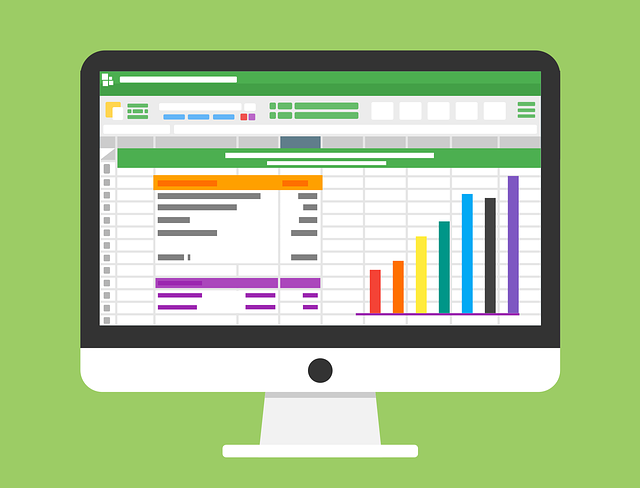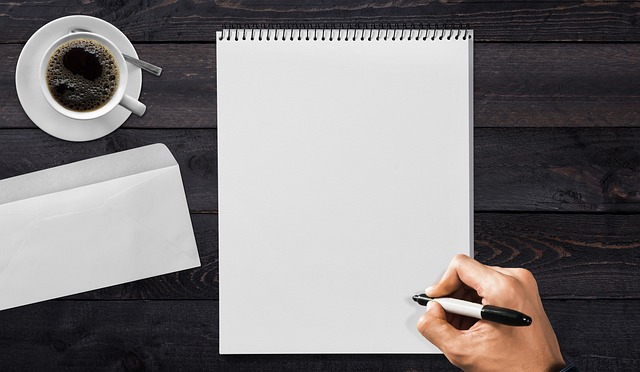

My name is Debbie, and I am passionate about developing a love for the written word and planting a seed that will grow into a powerful voice that can inspire many.


Have you ever found yourself staring blankly at a blank page, unsure of how to begin writing a business letter? Or maybe you’re just looking for some guidance on formatting and structuring your letter in a professional and effective way. Whichever the case may be, fear not! In this article, we’re diving into the world of business letter writing, specifically focusing on the block format. Whether you’re a seasoned professional or a fresh-faced entrepreneur, we’ve got you covered with a comprehensive guide that will demystify the process and equip you with the necessary tools to craft a letter that will make a lasting impression. So, grab a pen and paper, and let’s get started on transforming your business communication game!
In the world of business communication, the format of a letter plays a vital role in conveying a professional image. One widely used format is the block format, which is widely recognized and easy to read. So, what exactly is the block format? In this post, we will delve into the details and help you understand the ins and outs of this format.
In the block format, the entire letter is aligned to the left margin, creating a clean and organized appearance. The content is divided into distinct sections, each with its own purpose and formatting. The block format includes the sender’s address, date, recipient’s address, salutation, body paragraphs, and closing. Each of these sections has specific rules for formatting, such as indentation, line spacing, and font size. To make your business letters even more professional, remember to use a standard business font, such as Arial or Times New Roman, and keep the font size between 10 and 12 points for optimal readability.

The block format is a commonly used writing style that organizes information in a clear, logical manner. It involves starting each paragraph on a new line, with no indentation, and using justified alignment. This format is crucial in ensuring readability and enhancing the overall structure of your written work.
By utilizing the block format, you create a visually appealing and professional-looking document. This style is particularly important in various business communications such as cover letters, memos, and reports. It allows the reader to easily navigate through the content, making it more accessible and engaging. In addition, the block format helps to convey your ideas and arguments in a coherent manner, enabling the reader to grasp your message effectively.
Here are some key aspects of the block format:
– Consistency: Ensure that each paragraph follows the same alignment and spacing throughout your document. This consistency promotes clarity and helps your reader focus on the content.
– Clear headings: Use descriptive subheadings to break up your text. Headings make it easier for the reader to scan your document for specific information.
– Purposeful use of white space: Leave adequate space between paragraphs, sections, and headings. This enhances readability and prevents your text from appearing cluttered.
– Emphasize important points: Utilize bold formatting to highlight essential terms, phrases, or statistics. This helps draw attention to key information and ensures that critical points are not overlooked.

In conclusion, understanding and utilizing the block format is crucial for effective communication in various contexts. By adopting this format, you enhance the visual appeal, clarity, and organization of your written work. So next time you draft a business letter or report, remember the importance of the block format in conveying your message efficiently.
In formal business letters, the block format is widely used for its simplicity and professionalism. Three key elements contribute to the overall structure and appearance of this format: addressing, salutation, and date.
Addressing: Begin your letter by placing your address at the top of the page, aligned to the left. This includes your name, street address, city, state, and zip code. Leave a single line space and then align the recipient’s address on the left side of the page. Include their name, their title or position, the company name, street address, city, state, and zip code. Remember to use proper capitalization and punctuation for a polished look.
Salutation: After the recipient’s address, leave a single line space and start the salutation. Address the recipient formally using “Dear” followed by their title and last name. If you are unsure of their gender or prefer a more generic greeting, you can use their full name without a title or simply use “To Whom It May Concern.” It is important to maintain a respectful and professional tone throughout the salutation.
Date: Following the salutation, leave another single line space and insert the date. The date should be aligned to the left, just like the addresses. Begin with the month, written in full, followed by the day and year, separated by commas. Adding the date is essential for record-keeping purposes and provides a reference point for future correspondence.

Remember, when using the block format, paying careful attention to these key elements will help ensure that your business letters look professional and leave a lasting impression.
When it comes to writing a business letter, proper structure is key to ensuring your message is clear and professional. By organizing your letter into distinct sections—opening, body, and conclusion—you can effectively convey your ideas and maintain the reader’s attention. Let’s take a closer look at each section and what it entails:

When it comes to writing block-style business letters, following proper formatting guidelines is essential for creating a professional and well-structured document. To ensure your letter is visually appealing and easy to read, consider these essential tips:
1. Margins: Maintain one-inch margins on all sides of the letter for a clean and balanced appearance. This helps create ample white space, making it easier for the reader to navigate through the content.
2. Font and Size: Select a professional and easily readable font, such as Arial or Times New Roman. Opt for a font size of 12 pt to ensure clarity and legibility. Avoid using fancy or decorative fonts as they can appear unprofessional and may be difficult to read.
3. Alignment: All text in a block-style business letter should be aligned to the left margin. Avoid using justified alignment, as it can result in awkward spacing and gaps between words.
4. Spacing: Use single spacing within paragraphs and double spacing between paragraphs to enhance readability and make it easier for readers to distinguish between different sections.
5. Paragraphs: Begin each paragraph with a standard indent of 0.5 inches, ensuring the content flows seamlessly. This indentation helps to visually separate paragraphs and aids in identifying key points.

Additionally, remember to include relevant contact information, such as your name, title, company, address, phone number, and email address, at the top of your letter. This information should be aligned to the right margin. By adhering to these formatting guidelines, you can create a professional block-style business letter that leaves a lasting impression on your recipient.
When it comes to writing business letters in block format, it’s important to understand the specific requirements and conventions of your industry. Each industry has its own unique standards and expectations for communication, and your business letters should reflect that. Whether you’re in the legal, healthcare, or technology sector, here are some key insights to consider:
Legal:
Healthcare:
By following these industry-specific insights, you can effectively tailor your block format business letters to meet the expectations of your sector. Remember, attention to detail and a professional tone are key to creating impactful correspondence that resonates with your recipients.

When it comes to writing a business letter, choosing the right format is essential to make a lasting impression. One such format is the block format, which lends a professional look to your correspondence. To ensure your block format business letter has the desired impact, here are some practical tips and recommendations:
Begin by ensuring your letter adheres to a clean and professional layout. Consider using a readable font like Arial or Times New Roman in 11 or 12 point size. Remember to align your text to the left margin with single-spacing and double-spacing between paragraphs. This uniformity gives your letter a neat and organized appearance, enhancing its impact.
A well-crafted block format business letter should contain all the necessary elements to convey your message effectively. Begin with a professional salutation, followed by the recipient’s address, date, and a subject line. Your letter’s body should be concise, yet informative, with a clear introduction, details supporting your main points, and a concise conclusion. Finally, conclude the letter with a polite closing and your signature.
By following these practical tips and utilizing the block format, you can create a business letter that leaves a long-lasting impact on your readers.

The block format is a professional tool that is essential for effective communication in various business settings. By mastering this format, individuals can ensure that their messages are clear, concise, and visually appealing to their recipients. Whether it is writing a business letter, creating a professional email, or drafting a company memo, the block format provides a standardized structure that helps organize information and convey professionalism.
One of the key advantages of the block format is its simplicity and clarity. The format emphasizes a clean and organized appearance, making it easy for readers to navigate through the content. By including a clear and concise subject line, using proper headings, and separating different sections with bold headings or bullet points, the block format enhances the readability and comprehension of the message. Additionally, the use of paragraphs helps break down complex information into manageable chunks, making it easier for the reader to grasp the main points.
Q: What is the block format for writing a business letter?
A: The block format is a common style used for writing business letters. In this format, all the text is aligned to the left margin, creating a ”block” of content. It is widely accepted as the standard format for professional correspondence.
Q: Why is the block format preferred for business letters?
A: The block format offers a clean and professional appearance, making it easier for the reader to understand the letter’s message. With its clear and organized layout, the block format ensures that important information stands out and is easy to locate.
Q: Are there any specific guidelines to follow when using the block format?
A: Yes, there are several guidelines that should be followed when using the block format for a business letter. These include using a standard font, aligning all text to the left margin, using single-spacing within paragraphs and double-spacing between paragraphs, and providing a clear and concise subject line.
Q: How should the date be formatted in a business letter using block format?
A: The date in a business letter using block format is typically written on the left-hand side, a few lines below the sender’s address. It should be written in full, with the month spelled out, followed by the day and year. For example, “January 12, 2022.”
Q: Where should the recipient’s address be placed in a business letter using block format?
A: The recipient’s address is typically placed below the date and aligned with the left margin. It should include the recipient’s full name, title (if applicable), company name, street address, city, state, and postal code.
Q: How should the salutation be written in a business letter using block format?
A: The salutation should be formal and personalized. It should begin with a formal greeting such as ”Dear Mr. Smith” or ”Dear Ms. Johnson,” followed by a colon.
Q: How is the body of the business letter structured in block format?
A: The body of the letter should start with an introduction paragraph that clearly states the purpose of the letter. This should be followed by one or more paragraphs providing supporting details, and a concluding paragraph summarizing the main points. Each paragraph should be separated by a single blank line.
Q: What is the recommended closing for a business letter in block format?
A: The closing of a business letter in block format should be formal and professional. Common examples include ”Sincerely,” “Regards,” or ”Best regards.” The closing should be followed by a comma and the sender’s full name.
Q: Can you provide an example of a business letter using block format?
A: Sure, here is an example:
[Your Name]
[Your Title]
[Your Company Name]
[Your Street Address]
[City, State, Postal Code]
[Email Address]
[Phone Number]
[Date]
[Recipient’s Name]
[Recipient’s Title]
[Company Name]
[Street Address]
[City, State, Postal Code]
I am writing to inquire about the marketing services offered by your company. [Introduction paragraph]
In working towards expanding our customer base, we are seeking a partner that can provide expertise in developing targeted marketing campaigns. We believe that your company’s successful track record and innovative approach align well with our objectives. [Supporting details]
We would appreciate the opportunity to discuss potential collaboration and explore how your services can benefit our organization. Please let us know if you are available for a meeting next week. [Concluding paragraph]
Thank you for your attention to this matter.
Sincerely,
[Your Full Name]
In conclusion, the block format is a widely used and professional way to format a business letter. By following these guidelines and examples, you can easily create a well-structured and effective letter for any business correspondence.